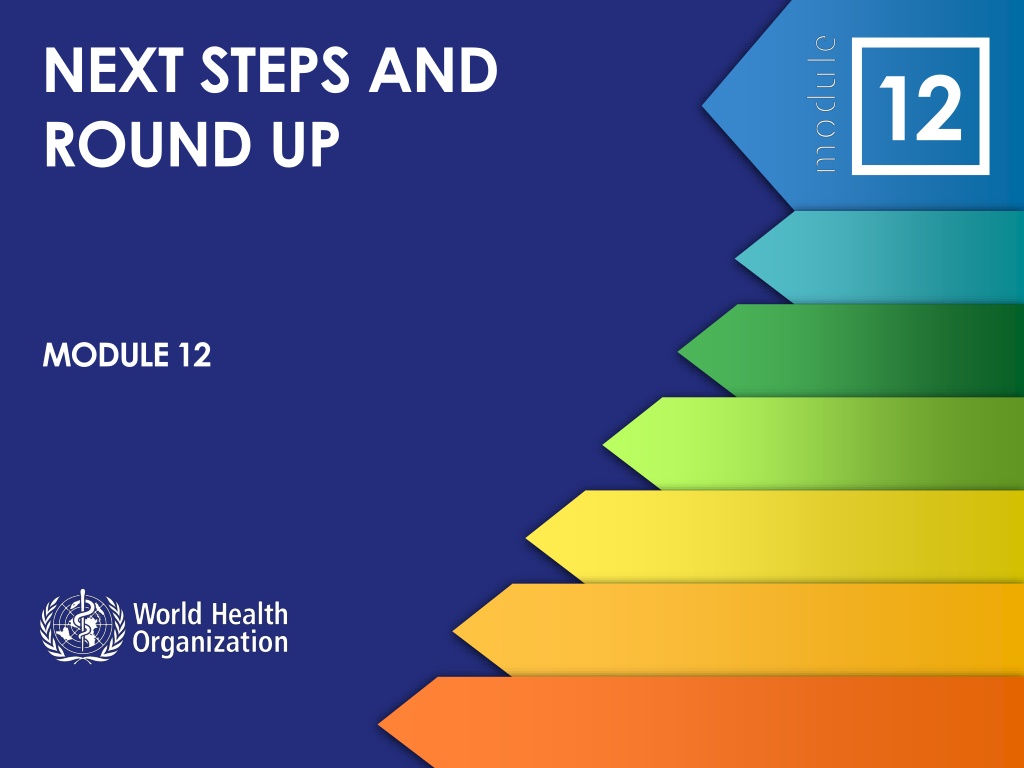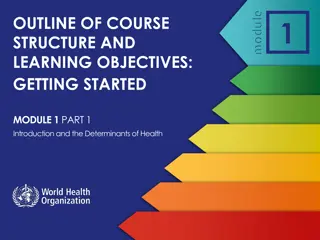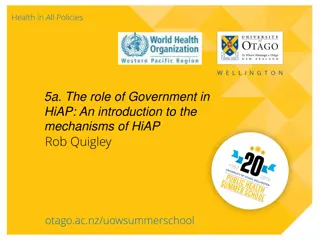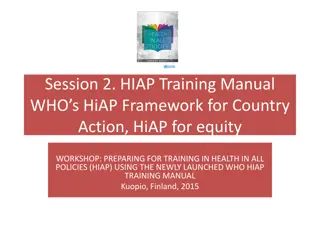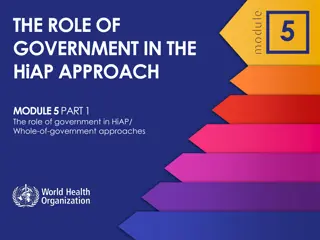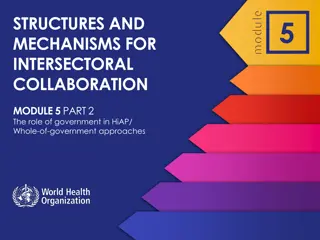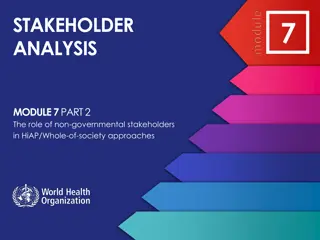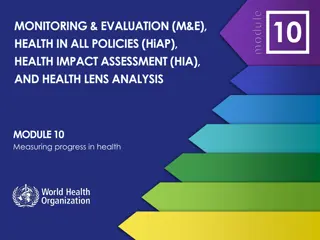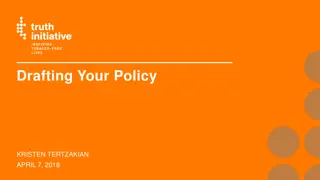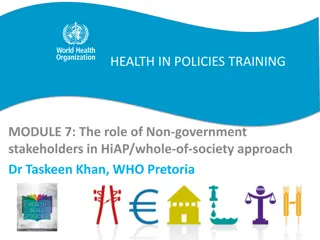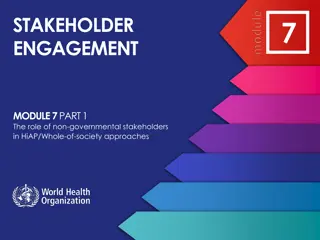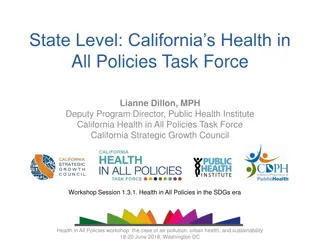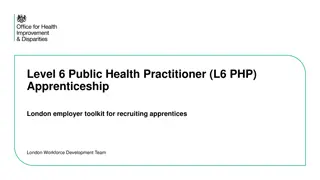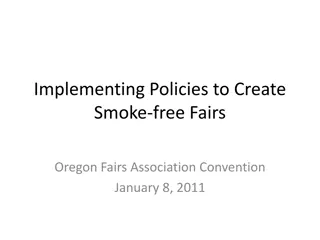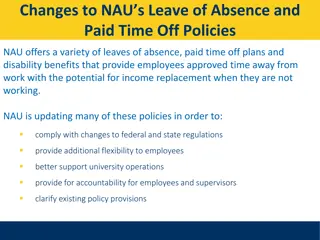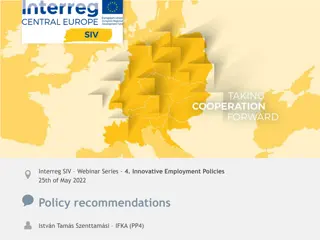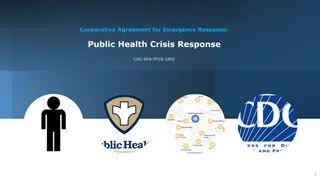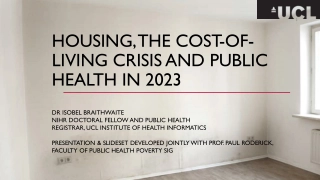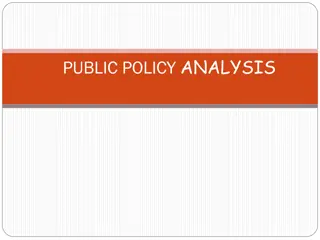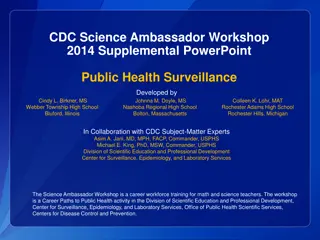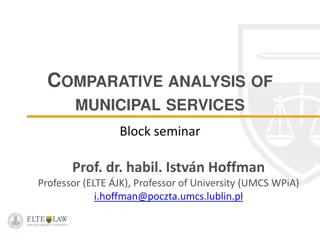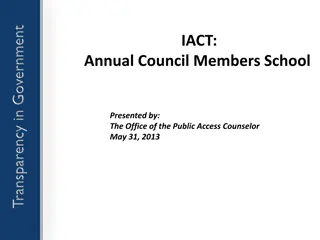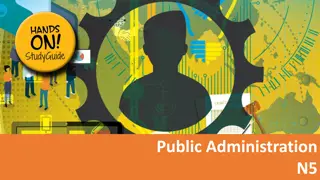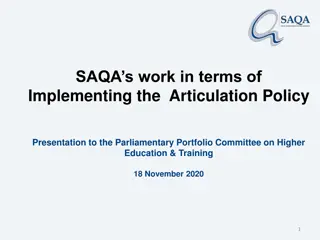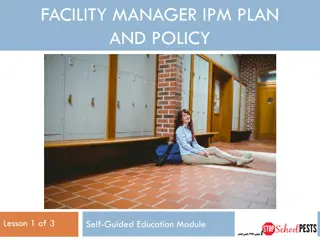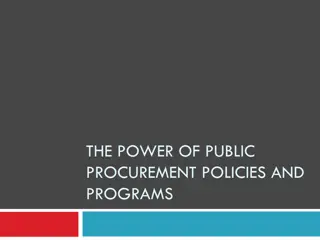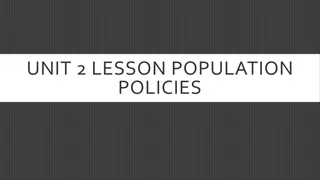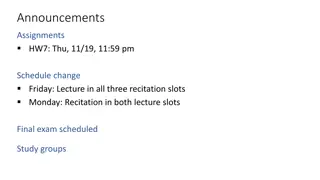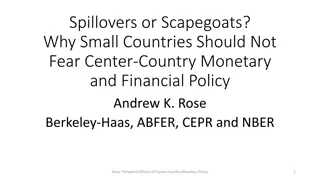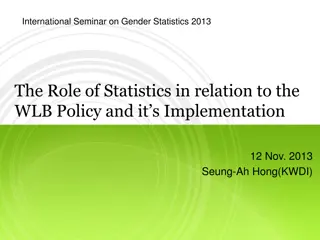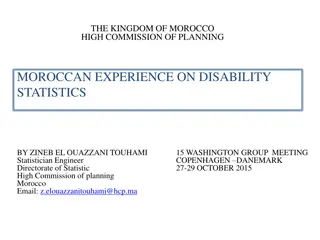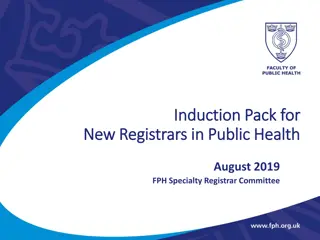Implementing Health in All Policies (HiAP) for Better Public Health
This presentation covers key messages, objectives, and lessons learned from applying Health in All Policies (HiAP) approach. It emphasizes the importance of collaboration, adaptable ways of working, and whole-of-government and whole-of-society approaches to maximize health benefits and avoid detrimental impacts of public policies. The content highlights the need for political commitment, global partnerships, and better integration of civil society roles in implementing HiAP. Strategies for shaping agendas, prioritizing issues, and preparing evidence-supported policy briefs for effective health interventions are also discussed.
Download Presentation

Please find below an Image/Link to download the presentation.
The content on the website is provided AS IS for your information and personal use only. It may not be sold, licensed, or shared on other websites without obtaining consent from the author. Download presentation by click this link. If you encounter any issues during the download, it is possible that the publisher has removed the file from their server.
E N D
Presentation Transcript
NEXT STEPS AND ROUND UP 12 MODULE 12
12 LEARNING OBJECTIVES 1 List key messages of HiAP workshop 2 Identify ways to apply HiAP in practice
12 KEY MESSAGES THE OVERALL PURPOSE OF THE WORKSHOP WAS TO: Build capacity to promote, implement and evaluate HiAP 1 Encourage engagement and collaboration across sectors 2 Facilitate the exchange of experiences and lessons learned 3 Promote regional and global collaboration on HiAP. 4
12 KEY MESSAGES HiAP is a continuous approach to improve health and promote health equity. It requires adaptable ways of working and places value on soft skills as well as the technical or hard skills. HiAP is an evolving and reflective practice and many actors in many countries, and at many levels, are contributing to the HiAP knowledge and evidence base. HiAP brings together partners from many sectors to recognize the links between health and other policy areas, break down silos, and build new partnerships to create mutually beneficial solutions.
12 KEY MESSAGES HiAP provides a means to maximize health benefits and avoid the unintended impacts of public policy that can be detrimental to the health of populations or subgroups of the population through a whole-of-government and whole-of-society approach. Policy-making at the country level cannot be seen in isolation from globalization, global development and global governance. Policy- making influences and can be influenced by decisions made beyond national borders.
LESSONS LEARNED FROM APPLYING HiAP 12 Political commitment, mandate and leadership Global and regional partnerships Civil society role is important but needs to be better integrated Health and social issues are not prioritized Concept is easily understood but implementation is a challenge Sustainability issues New institutional and governance arrangements: oversight, budget, resources Engagement of partners and stakeholders from the outset: common vision and stronger ownership Health sector reform Re-structuring of Ministry of Health New competencies
WHAT WILL YOU DO DIFFERENTLY? TAKE AWAY IDEAS FOR APPLYING HiAP IN PRACTICE 12 1 Shape the agenda Identify and prioritize issues suitable for a HiAP approach (Module 3) Look for windows of opportunity (Module 4) Prepare targeted and effective policy briefs supported by evidence (Modules 6 & 10) Publicize widely and creatively evidence for health interventions
WHAT WILL YOU DO DIFFERENTLY? TAKE AWAY IDEAS FOR APPLYING HiAP IN PRACTICE 12 Promote intersectoral collaboration within government and engage external stakeholders (Modules 5 & 7) 2 Implement small bottom-up efforts: Identify key gate-keepers and influential decision-makers Liaise more with colleagues in other departments Share information Learn the language of other sectors
WHAT WILL YOU DO DIFFERENTLY? TAKE AWAY IDEAS FOR APPLYING HiAP IN PRACTICE 12 Promote intersectoral collaboration within government and engage external stakeholders (Modules 5 & 7) 2 Initiate top-down efforts: Establish formal mechanisms and structures for intersectoral collaboration Create platforms for dialogue Assign focal points for intersectoral collaboration Search for high-level political support Identify and analyze external stakeholders to engage Build a supportive network for policy change (Module 8)
WHAT WILL YOU DO DIFFERENTLY? TAKE AWAY IDEAS FOR APPLYING HiAP IN PRACTICE 12 3 Build institutional capacity Develop a workforce with diverse skills and expertise Facilitate staff secondments and professional development Add HiAP-related activities to job descriptions and performance requirements Promote public health training into education of future health and other professionals, including journalists and civil servants Seek WHO support
WHAT WILL YOU DO DIFFERENTLY? TAKE AWAY IDEAS FOR APPLYING HiAP IN PRACTICE 12 4 Reinforce research activities Support public health institutions (Module 10) Strengthen ties between academia and policy circles while retaining separation (Modules 10 & 11)
WHAT WILL YOU DO DIFFERENTLY? TAKE AWAY IDEAS FOR APPLYING HiAP IN PRACTICE 12 5 Monitor and evaluate progress Share and publish case studies Follow regional and international developments for HiAP Consider monitoring and evaluation from the outset
End of Module 12 End of Course
